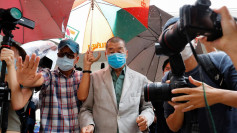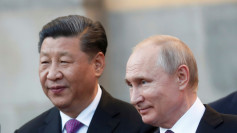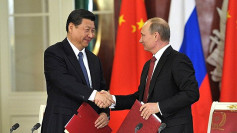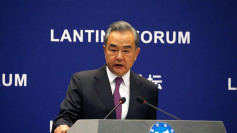Lavish corporate borrowings coupled with government-approved stimulus triggered an unexpected growth in China's sagging economy during the first three months of the year.
The latest edition of the China Beige Book report made public Wednesday revealed: "an unmistakable first-quarter recovery" in China driven by mammoth lending. The report noted that corporate revenue, profits, investment and hiring rose nationwide compared to the fourth quarter of 2018 and the year-ago period.
The downside -- skyrocketing borrowing costs.
This debt-fueled growth in an economy in the midst of a painful economic deleveraging is seeing alarm lights flash a blinding red among government planners.
"They're going to have to subsidize the rates if they want this to continue," said Leland Miller, CEO of China Beige Book, according to CNBC.
Miller also said the new report confirms that deleveraging is well and truly dead.
"The idea that deleveraging has continued through 2018 and into 2019, that's laughable," he pointed out.
"I don't think people understood the level (to which) there was a decision by Beijing, they were going to reverse course on deleveraging and all the progress they made."
The report revealed that corporate borrowing in Q1 2019 reached the highest point since the middle of 2013. But more ominous for Beijing is the discovery the proportion of loans made through shadow banking increased for a second-straight quarter to the highest level since Q2 2016, which was another period marked by the stimulus.
The report said every single sector and region of China saw credit costs rise in the first quarter compared to Q4 2018. The average bank loan rate rose 101 basis points to 6.9 percent, while the average non-bank rate jumped 426 basis points to 11.42 percent.
China's harsh deleveraging campaign launched in 2017 had the effect of helping weaken the economy at the time U.S. president Donald Trump declared a trade war on China. Faced with the undeniable slowdown in economic growth in the first half of 2018, Beijing was forced to stimulate the economy with tax cuts and other fiscal incentives to business firms.
It also ordered state-owned banks, especially the "Big Four," to lend more to small and medium-scale businesses. Strangely for China, it is these small firms that contribute to the bulk of economic growth and employment.
Their smallness and riskiness, however, means they've had a more difficult time securing loans compared to larger, state-owned corporations. Shut-off from legal lending sources, this business turned to shadow banking firms that lend without too much fuss but at exorbitant interest rates.
The People's Bank of China, the central bank, announced in December 2018 the creation of a special tool called the Targeted Medium-Term Lending Facility for lending to smaller businesses.






